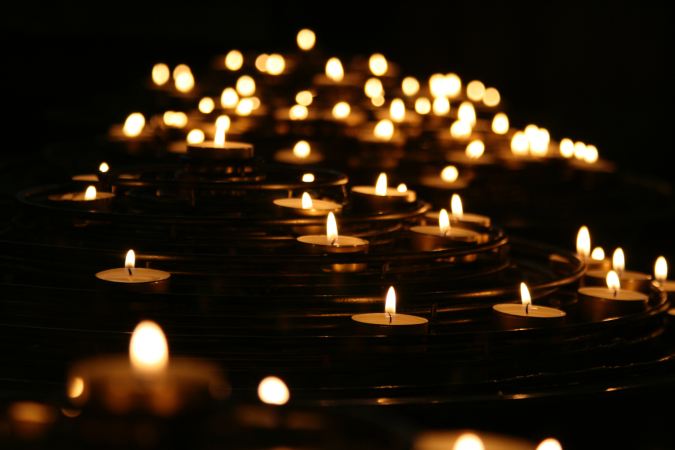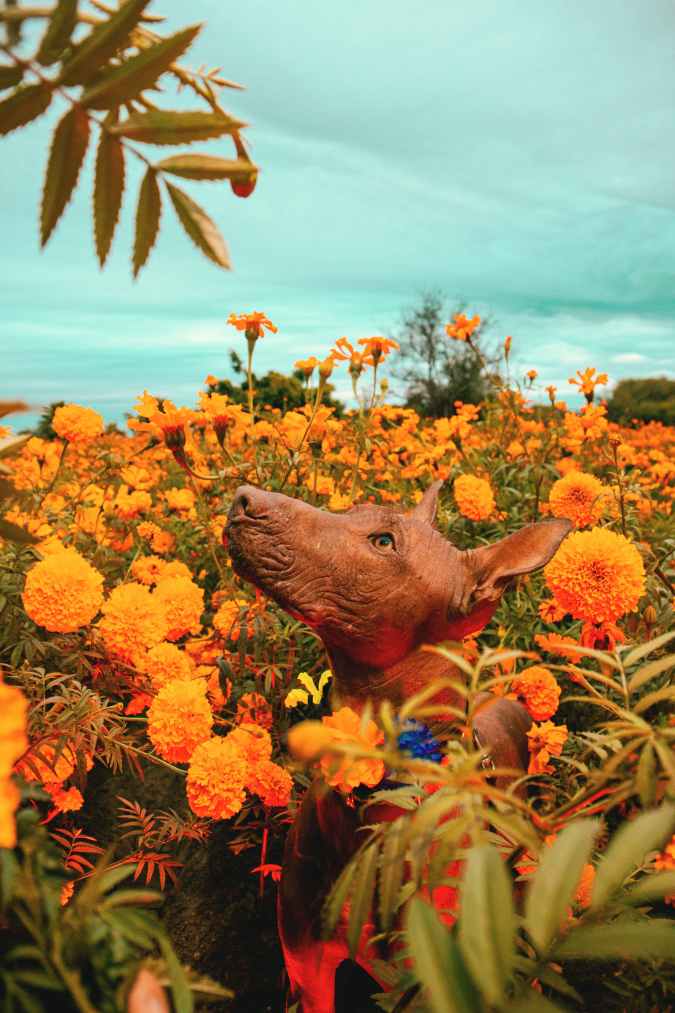What You Need For Your Día de los Muertos Ofrenda
There is a meaning behind the levels of an altar and the items used as part of the Dia de Los Muertos celebrations

Photo: Unsplash/ Roger Ce
Día de los Muertos, typically celebrated on November 1st and 2nd, is a beautiful tradition in which preparations are made for the arrival of the souls of loved ones who’ve died to meet with their living relatives once again. The origins of Día de los Muertos date back to Indigenous communities in the Americas over 3,000 years ago. This tradition is celebrated in Mexico and even other countries in Latin America. Every year countless families come together to build their ofrendas or altars filled with offerings and personal items to honor their loved ones and ancestors. Additionally, ofrendas represent the four elements: earth, wind, fire, and water through their components. These essential parts of an ofrenda range from the levels that make up the base to decorations and the kinds of offerings that are placed. We’ve rounded up 11 essentials when making your Día de los Muertos ofrenda or altar and their significance.
Levels

Photo: Unsplash/Roger Ce
The altar or ofrenda is usually made up of three levels representing Heaven, Earth, and the underworld. Some ofrendas are made up of seven levels which represent the steps taken by the dead to the afterlife. You can create these different levels by using tables or other furniture and stacking boxes (or similar items) to create however many levels you wish to have.
Photos

Pexels/Jhovani Morales
Pictures of loved ones are vital to an ofrenda. It is essential to include pictures of all of you ancestors who’ve crossed over. In the film Coco the importance of photos as a part of the ofrenda as they are a way for the souls to return to the human realm.
Cempasúchil

Photo: Unsplash/Roger Ce
With its distinct aroma and bright color, cempasúchil or marigolds are one of the most distinctive parts of Día de los Muertos and ofrendas. Marigolds are a key component to ofrendas as a way to guide spirits back to this world because of their scent. Many opt to craft these flowers on their own using paper or buying bouquets from local vendors.
Calaveras

Photo: Unsplash/Iván Díaz
Calaveras or skulls are a iconic symbol of Día de los Muertos ofrendas. Calaveras during the festivities can range from papier-mâché to sugar skulls, which are more traditional. Unlike other skull decorations you’d see, these skulls are typically painted in bright colors and are representative of those who’ve passed. Some of the decorations include flowers, bright colors, and glitter and can include the name of the dead. While sugar skulls can often be decorative, they are also often offered as cookies, candles, and candle holders.
Personal Items

Unsplash/Gerardo Covarrubias
Each ofrenda is curated to each person or family’s loved ones. Part of that is made through the addition of personal items whether it’d be through personal belongings that remind us of them or food—which also serve to signify earth on the altar. This is where each person can add their unique touch in honor of their loved ones. Many people choose to add foods and/or drinks that their loved ones enjoyed as well as personal items that remind them of that person. Regardless of the kind of food or items placed, the ultimate purpose is to provide your loved ones with a feast to honor their memory and make them feel at home during the celebrations.
Incense

Pexels/Tetyana Kovyrina
Incense, especially copal, is used to cleanse or purify the air and space for spirits’ arrival. In addition, the powerful scent of copal can also work to draw spirits to the world. The copal is considered sacred incense of Mayans and Aztecs/Mexica and they kept it in large quantities in the Great Temple at Tenochtitlan.
Pan de Muerto

Unsplash/Marco Samaniego
Pan de Muerto is a traditional bread placed on an ofrenda and consumed as part of festivities. The bread can be traced to the Aztec/Mexica culture and it’s believed to nourish the souls on their journey back. Usually, the bread is made up of a round base with a skull and bones placed on top and the recipes can vary from family to family.
Candles

Unsplash/Mike Labrum
Representing the fire element, candles are used as a way to help guide spirits back to the living world. They are often present all over the altar and can be a decorative design or a single white candle as well as velas in honor of the saints.
Papel Picado

Unsplash/Arturo Ochoa
Papel picado—an intricate paper decoration used to represent air—in many Mexican festivities is a key component and decoration used. During Day of the Dead, you can find paper picado with skulls and other symbolic imagery to celebrate the festivities. It’s a usually a bright and colorful banner placed at the base of the altar and often also on the ceiling if the altar is inside.
Water and Alcohol

Pexels/Ray Piedra
Evidently, water is used to represent the element as well as to provide our loved ones with something to quench their thirst upon arrival. In many altars, you’ll also find tequila or mezcal as well and typically it’s a brand that the departed enjoyed consuming. Some also use other beverages or liquors that are specific to the dead.
Catrinas, Xolos, and More Decorations

Photo: Pixels/Ramon Hernandez
The Catrina figure, created by Jose Guadalupe Posada, is a well-known symbol of Day of the Dead. Originally made as a satirization of upper-class women with European influence, The Catrina has evolved into the beloved figure she is today synonymous with the festivities. The xolo, or xoloitzcuintli, has an important role in this tradition as these dogs are seen as spiritual protectors and guides between the two realms of the living and dead. Many figurines are used to adorn ofrendas with these key figures in mind from tiny trinkets to life-size statues that stand guard near the altars.













